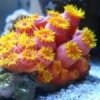-
Topics
-
Latest Update
-
0
WTT Red saddleback clownfish breeding pair
hi, anyone wanna trade fish or coral with my red saddleback clownfish adult breeding pair for trade with fish or coral at clementi pm if interested 20250108_195853.mp4 -
0
-
3
-
0
Chaeto in Yishun/Khatib?
Hi all! My tank has just cycled (i choose to believe so. i may be wrong but readings are good). Anyone in the above mentioned neighbourhood has got any Chaeto to discard? can i have some? -
0
WTS : Eco Tech Radions XR15 G5 (Set of 3 units)
Hi all, Letting go of my Radions XR15 G5s (Blue) that comes with original Eco Tech RMS Arms, Track and Slides per below, for 4 feet tanks. Asking for $1.8k for the whole set. Not able to sell individually. Please contact me via WA at 93840868. Thanks for your interest!
-







Recommended Posts
Join the conversation
You can post now and register later. If you have an account, sign in now to post with your account.